Fukuda Denshi Co HLX801G TM XMTR Module User Manual users manual
Fukuda Denshi Co Ltd TM XMTR Module users manual
users manual
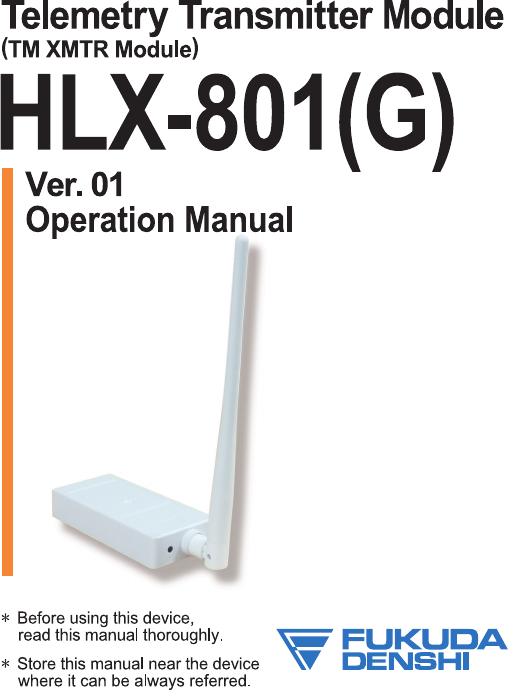
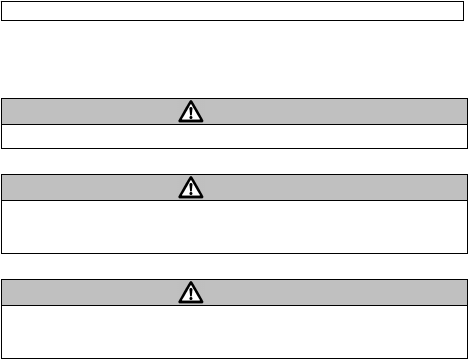
CAUTION
Federal Law restricts this device to sale by or on the order of a physician.
CAUTION
Users are advised to periodically contact the FCC or specified frequency
coordinator and determine if other or your transmitter frequencies that
may cause interference.
CAUTION
The manufacturers, installers and users of Wireless Medical Telemetry
System equipment are cautioned that the operation of this equipment
could result in harmful interference to other nearby medical devices.
CAUTION:
• This equipment for sale by or on the order of a physician.
• If this manual has pages missing or out of order, contact Fukuda Denshi
for replacement.
• Only physician or persons instructed by physicians are allowed to use the
equipment.
• The information contained in this document is subject to change without
notice due to improvement in the equipment.
© 2016 Fukuda Denshi Co., Ltd.
No part of this document may be copied or transmitted in any form without the prior
written permission of Fukuda Denshi Co., Ltd.
This operation manual is for the HLX-801(G) Ver. 01.
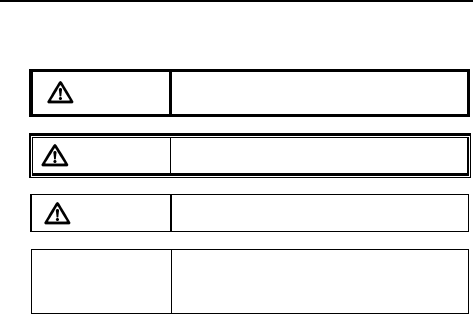
i
Thank you for purchasing the HLX-801(G) telemetry transmitter module from Fukuda
Denshi. Before use, read this operation manual thoroughly for correct handling and
operation.
Safety Precautions
The safety precautions shown in this manual contain important details on the safe use
of this product, and must be obeyed. Make sure to follow the precautions indicated
below, as these are important messages related to safety.
DANGER Failure to follow this message may cause immediate
threat of death or serious injury.
WARNING Failure to follow this message may result in death or
serious injury.
CAUTION Failure to follow this message may cause injury or
failure to the equipment.
NOTE
A note is not related to product safety, but provides
information about the correct use and operating
procedures to prevent incorrect operation and
malfunction of the HLX-801(G).
Precaution from Fukuda Denshi
Fukuda Denshi is liable for the safety, reliability, and performance of its equipment
only if;
Maintenance, modifications, and repairs are carried out by authorized personnel
or organization.
Components are used in accordance with Fukuda Denshi operating instructions.
If the equipment is used incorrectly and become unusable, Fukuda Denshi is not liable
for the malfunction. Use the equipment only for the purpose specified in this manual.
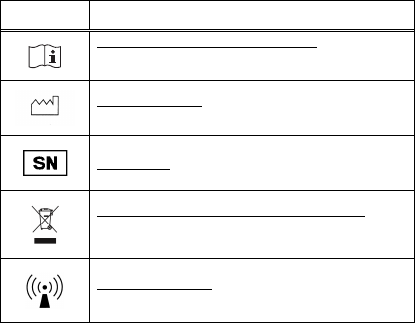
ii
Graphic Symbols
Refer to the following for the meaning of the symbol indicated on the equipment.
Symbols indicated on the main unit of the HLX-801(G)
Symbol Description
UFollow operating instructions (Information)
Indicates the need to refer to related accompanying documents
before operation.
Year of Manufacture
Indicates the manufactured year.
Serial Number
WEEE (Waste Electrical and Electronics Equipment)
UIndicates a separate collection for electrical and electronic
equipment.
Non-ionizing radiation
Indicates the including RF transmitter.

iii
Precautions for Safe Operation of Medical Electrical Equipment
Cautions described here are regarding the general instructions for safety use to the
patient and users. Precautions unique to this device are detailed throughout the manual.
CAUTION
1. Users should have a thorough knowledge of the operation before using this
equipment.
2. Pay attention to the following when installing or storing the equipment.
Do not install or store in an area where the unit will be subject to splashing
water.
Do not install or store in an area where the environmental conditions, such
as atmospheric pressure, temperature, humidity, ventilation, sunlight, dust,
sodium, sulfur, will adversely affect the equipment.
Place the equipment on a stable surface where there is no inclination,
vibration, or shock (including during transportation).
Do not install or store in an area where chemicals are stored or gasses are
evolved.
3. Before operating the equipment, verify the following items.
Check the cable connection and polarity to ensure safe and proper
operation of the equipment.
Ensure that all cables are firmly and safely connected. Especially, recheck
the attachment and connection condition of electrodes and transducers.
Pay special attention when the equipment is used in conjunction with other
equipment because it may cause erroneous judgment and danger.
Check the remaining battery level.
When replacing the battery, make sure that the battery polarity is correct.
Do not charge the battery.
4. During operation of the equipment, verify the following items.
Do not operate the equipment beyond the time period required for
diagnosis and medical care.
Do not pick up and/or swing the equipment pulling/grabbing the probe
(sensor) or cable part. It may damage the equipment and lead to
measurement error.
Always observe the equipment and patient to ensure safe operation of the
equipment.
If any abnormality is found on the equipment or patient, take appropriate
measures such as ceasing operation of the equipment or detaching the
sensor or electrode in the safest way for the patient.
Do not allow the patient to come in contact with the equipment.

iv
CAUTION
5. After using the device, verify the following items.
Return all operating switches or knobs to the position before using the
equipment, and then switch off the power.
When unplugging the cables, do not apply excessive force by pulling on
the cable. Pull from the connector part of the cable.
Clean the accessories and cables, and keep them together in one place.
Keep the equipment clean to ensure proper operation for the next use.
Make sure to remove the batteries if the equipment is not used for a long
time. The leakage from the batteries may damage the equipment, or an
explosion from the batteries may occur.
6. If the equipment is damaged and in need of repair, ensure patient safety by
immediately turning the equipment off and remove the electrodes and/or
probe from the patient. Label the unit “OUT OF ORDER” and contact Fukuda
Denshi representative.
7. Do not disassemble or remodel the device.
8. Maintenance check
Make sure to periodically check the equipment and accessories.
(Maintenance contract is recommended.)
Before reusing the equipment that has been left unused for a while, make
sure that the equipment works normally and safely.
9. When using electrosurgical knives or defibrillator with this equipment, take
care of the following.
To prevent patient from burn injury, verify proper attachment of patient
ground plate, ECG electrode type when using the electrosurgical knife,
and verify paste volume, output energy when using the defibrillator.
Some types of equipment other than the above may cause accidental
hazards to the patient and operator due to the conditions of the equipment.
Read the operation manual attached to each device and understand the
precautionary instructions prior to use.
Non-Explosion Proof
DANGER
Never operate the equipment in the presence of flammable anesthetics or
high concentration of oxygen. It may cause an explosion or fire.
Never operate the equipment inside a hyperbaric chamber.
It may cause an explosion or fire.
Never operate the equipment where flammable gas or fluid such as
anesthetic, oxygen, and hydrogen are used.
It may cause an explosion or fire.
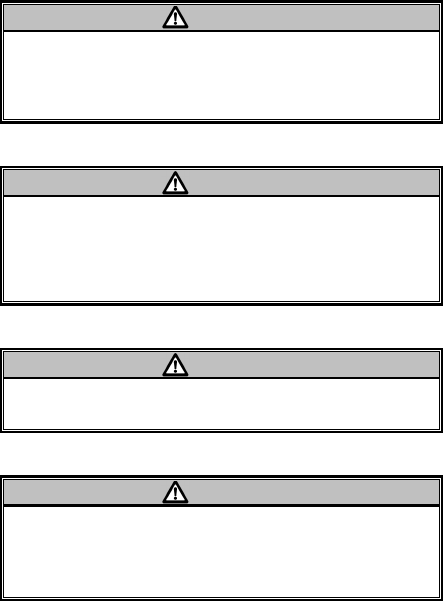
v
Precautions about Magnetic Resonance Imaging (MRI)
WARNING
Do not use this equipment in magnetic resonance imaging (MRI)
environments.
This equipment may be pulled towards the MRI device. And the local
heating by the induced electromotive force may cause burn injury to the
patient or deteriorate the performance of this equipment. For details, refer
to the operation manual for the MRI testing device.
Precautions about the installation of the equipment
WARNING
This equipment is a module dedicated to the bedside monitor manufactured
by Fukuda Denshi Co., Ltd. The use of the power separated from the
commercial power guarantees the safety.
Do not connect this equipment to a device other than the bedside monitor
manufactured by Fukuda Denshi Co., Ltd. The equipment may be damaged
or leakage current increases and the safety of the patient and operator
cannot be guaranteed.
Precautions about Accessories and Optional Accessories
WARNING
Use only the accessories and optional accessories specified by Fukuda Denshi.
Otherwise, the HLX-801(G) cannot deliver its maximum performance and may
be damaged, resulting in a safety hazard.
Precautions about Output Signal
WARNING
Do not use the output signal of the monitor that receives radio wave signal from
the HLX-801(G) as the trigger signal for IABP, MRI, echocardiographic, or
defibrillator for the following reasons. It may lead to a delay of operating timing
due to the delay time of waveform transmission. A trigger signal unrelated to the
heart rate may be generated due to the interfusion of spike noise at weak
electric field.
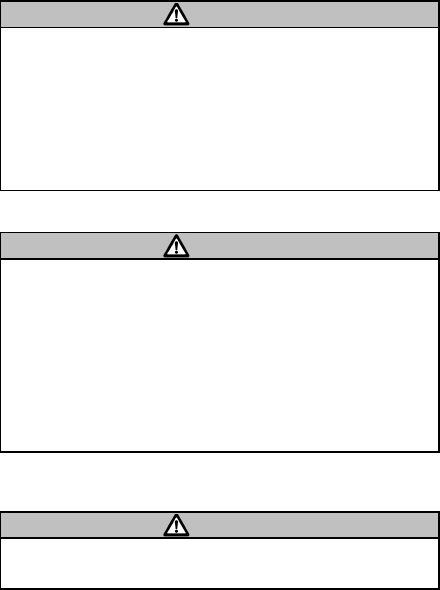
vi
Precautions about Alarm
CAUTION
The alarm generation may be delayed between the bedside monitor and the
central monitor depending on the communication specification (wired or
wireless) between the bedside monitor and central monitor. Read the
operation manual thoroughly and set the alarm.
The alarm system is different between the bedside monitor and central monitor
depending on the communication specification (wired or wireless). Read the
operation manual thoroughly and set the alarm.
When a parameter monitored on a bedside monitor is in a connector-off
condition, the numeric data and waveform for the parameter will not be
displayed on the central monitor. In addition, the alarm for the parameter will
not generate. Make sure that the connector is securely connected.
Precautions about Cleaning and Disinfection
CAUTION
Wipe using gauze or absorbent cotton etc. that has been soaked in alcohol, or
a weak acidic, weak alkaline, or neutral detergent and wrung. At this time,
make sure the chemicals do not enter the connectors or equipment. Do not
use organic solvents, thinner, toluene and benzene to avoid damaging the
resin case.
If there is a fear of contagion, wipe using a gauze or absorbent cotton soaked
in antiseptic soap or alcohol and wrung. At this time, do not immerse the
connector parts of the equipment in any chemical solution. Doing so may
cause contact failure.
Sterilizing in high-temperature by using gas sterilization or autoclave
equipment will damage this product, and should therefore not be used.
When sterilizing the entire room using a spray solution, pay close attention not
to have liquids get into the equipment or connectors.
Precautions about Disposing of Equipment, Accessories, or
Components
CAUTION
When disposing of the equipment, accessories, or components, use an
industrial waste distributor. Do not dispose of as ordinary waste.
Used disposal items shall be discarded as medical waste.
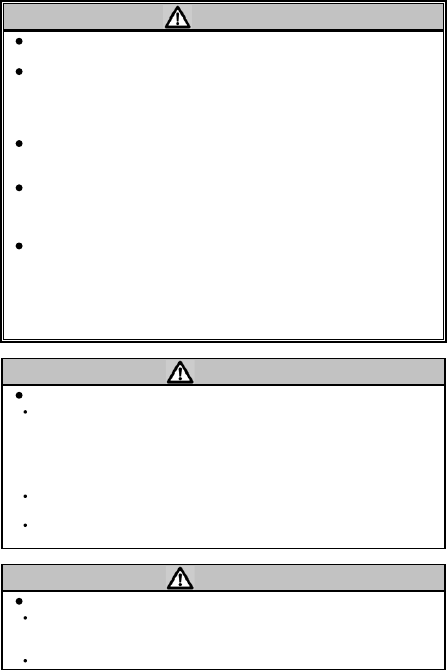
vii
Precautions for Safe Operation of Medical Telemetry
WARNING
The HLX-801(G) transmitter must not be co-located or operated in
conjunction with any other antenna or transmitter.
This equipment complies with FCC/IC radiation exposure limits set forth for
an uncontrolled environment and meets the FCC radio frequency (RF)
Exposure Guidelines and RSS-102 of the IC radio frequency (RF) Exposure
rules. This equipment should be installed and operated keeping the radiator
at least 20cm or more away from person’s body
Operation of HLX-801(G) requires the prior coordination with a frequency
coordinator designated by the FCC for the Wireless Medical Telemetry
Service.
This radio frequency device is susceptible to interference from outside
sources. Interference may prevent the monitoring of patients connected to
this equipment. If a problem exists, contact your local service
representative.
The HLX-801(G) transmits vital signs to the receiving monitor using radio
wave signal. Under unstable radio wave signals, the receiving monitor will
not generate any alarms. This situation may miss sudden change in the
patient's condition and may cause a serious accident. Under unstable radio
wave signals, check the patient status consistently under this situation. To
get stable radio wave signals, make sure to have a proper telemetry
installation.
CAUTION
Regarding introduction, make sure of the following precautions.
The medical institution (hereinafter referred to as the “Institution”) must
decide the telemetry installation plan for the medical department in order to
prevent interference and interference between transmitters (telemetry
based on destination country’s radio law). When telemetry has already
been installed and been used, radio format, frequency, and antenna power
are required to be examined to prevent interference.
When laying receiver antenna for each transmitter, the Institution has to
examine the installation so that electronic interference does not occur.
Based on the above examination result, the Institution should install each
receiver antenna as required.
CAUTION
For management, make sure to follow the precautions below.
The Institution should appoint a person (hereinafter referred to as the
“Overall Manager”) to manage the wireless channels for the whole
Institution.
The telemetry user verifies operation of the transmitter/receiver before use.
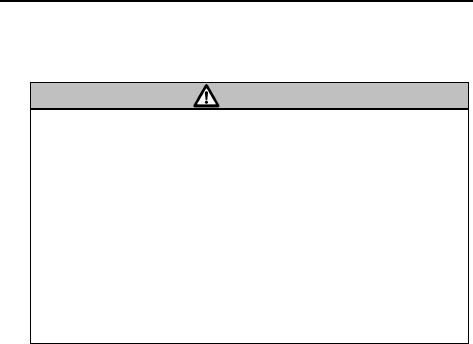
viii
Electromagnetic Compatibility
The performance of this device under electromagnetic environment complies with
IEC60601-1-2 (2007).
Precautions for Safe Operation under Electromagnetic Influence
CAUTION
If any sorts of electromagnetic wave, magnetic field, or static electricity exist
around the equipment, noise interference or malfunction of the device may occur.
If any unintended malfunction or noise occurs in monitoring, check the magnetic
influence and take appropriate countermeasures.
The following are examples of the common cause and countermeasures.
Cellular Phone
The radio wave may cause malfunction to the device.
Cellular phones and radio sets should be turned off in the room (building)
where a medical device is located.
Static Electricity
In a dry environment (room), static electricity is likely to occur. Take the
following countermeasures.
Both operator and patient should remove any static electricity before entering
the room.
Humidify the room.

ix
EMC Guidance
This equipment complies with IEC 60601-1-2 (2007). However, if portable transmitter
or wireless LAN equipment is used extremely nearby, the electromagnetic influence
may largely exceed the compliance level and may cause unexpected phenomenon such
as noise interference on the waveform.
Therefore, this equipment should be used in a location specified by each medical
institution.
If any unexpected noise interference on the waveform or failure to the peripheral
device occurs, stop using the equipment and follow the instruction of the technical
engineer.
The following is the information relating to EMC (Electromagnetic Compatibility).
(When using this equipment, verify that it is used within the environment specified
below.)
●Compliance to the Electromagnetic Emissions
The HLX-801(G) system is intended for use in the electromagnetic environment
specified below.
Emissions Test Compliance Electromagnetic Environment -
Guidance
RF Emissions
CISPR 11 Group 1
The HLX-801(G) uses RF energy only
for its internal function. Therefore, its
RF emissions are very low and are not
likely to cause any interference in
nearby electronic equipment.
RF Emissions
CISPR 11 Class A
The HLX-801(G) is suitable for use in
all establishments other than domestic
buildings and those directly connected
to a low-voltage power supply network
which supplies buildings used for
domestic purposes.
Harmonic Emissions
IEC 61000-3-2 NA
Voltage Fluctuations/
Flicker Emissions
IEC 61000-3-3
NA

x
●Compliance to the Electromagnetic Immunity (1)
The HLX-801(G) is intended for use in the electromagnetic environment specified
below. It is recommended that the HLX-801(G) be used in such an environment.
Immunity Test IEC60601-1-2
Test Level Compliance Level Electromagnetic
Environment - Guidance
Electrostatic Discharge
(ESD)
IEC 61000-4-2
2,4,6kV: Contact
2,4,8kV: Air
2,4,6kV: Contact
2,4,8kV: Air
Floors should be wood,
concrete or ceramic tile.
If floors are covered with
synthetic material, the
relative humidity should be
at least 30%.
Electrical fast
transient/burst
IEC 61000-4-4
2kV
power supply lines
1kV
input/output lines
2kV
power supply lines
1kV
input/output lines
Mains power quality should
be that of a typical
commercial or hospital
environment.
Surge
IEC E61000-4-5
1kV: differential
mode
2kV: common mode
1kV: differential
mode
2kV: common
mode
Mains power quality should
be that of a typical
commercial or hospital
environment.
Voltage dips,
short interruptions and
voltage variations on
power supply input lines.
IEC 61000-4-11
<5% UT*(>95% dip in
UT) for 0.5 cycle
40% UT(60% dip in
UT) for 5 cycles
70% UT(30% dip in
UT) for 25 cycles
<5% UT(>95% dip in
UT) for 5 sec.
<5% UT*(>95%
dip in UT) for 0.5
cycle
40% UT(60% dip
in UT) for 5 cycles
70% UT(30% dip
in UT) for 25
cycles
<5% UT(>95% dip
in UT) for 5 sec.
Mains power quality should
be that of a typical
commercial or hospital
environment.
If the user of the HLX-
801(G) requires continued
operation during power
mains interruptions, it is
recommended that the
HLX-801(G) is powered
from an uninterruptible
power supply.
Power Frequency
(50/60Hz) Magnetic Field
IEC 61000-4-8
3A/m 3A/m Power frequency magnetic
fields should be at levels
characteristic of a typical
location in a typical
commercial or hospital
environment.
Note: UT is the AC mains voltage prior to application of the test level.
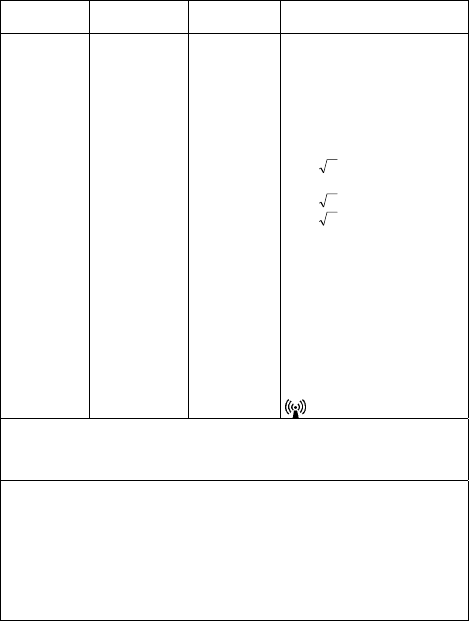
xi
●Compliance to the Electromagnetic Immunity (2)
The HLX-801(G) is intended for use in the electromagnetic environment specified
below.
It is recommended that the HLX-801(G) be used in such an environment.
Immunity Test IEC60601-1-2
Test Level
Compliance
Level
Electromagnetic Environment -
Guidance
Portable and mobile RF
communications equipment should be
used no closer to any part of the
HLX-801(G), including cables, than the
recommended separation distance
calculated from the equation applicable
to the frequency of the transmitter.
Recommended Separation Distance
Conducted RF
IEC 61000-4-6
3Vrms
150kHz to 80MHz
3Vrms d = 1.2 P
Radiated RF
IEC 61000-4-3
3V/m
80MHz to 2.5GHz
3V/m d = 1.2 P 80MHz to 800MHz
d = 2.3 P 800MHz to 2.5GHz
Where P is the maximum output power
rating of the transmitter in watts (W)
according to the transmitter
manufacturer and d is the recommended
separation distance in meters (m).
Field strengths from fixed RF
transmitters, as determined by an
electromagnetic site surveya), should be
less than the compliance level in each
frequency rangeb).
Interference may occur in the vicinity
of equipment marked with the
following symbol:
Note 1 : At 80MHz and 800MHz, the higher frequency range is applied.
Note 2 : These guidelines may not apply in all situations.
Electromagnetic propagation is affected by absorption and reflection from structures, objects
and people.
a) Field strengths from fixed transmitters, such as base stations for radio (cellular/cordless)
telephones and land mobile radios, amateur radio, AM and FM radio broadcast and TV broadcast
can not be predicted theoretically with accuracy.
To assess the electromagnetic environment due to fixed RF transmitters, an electromagnetic site
survey should be considered.
If the measured field strength in the location in which the HLX-801(G) is used exceeds the
applicable RF compliance level above, the HLX-801(G) should be observed to verify normal
operation. If abnormal performance is observed, additional measures may be necessary, such as
reorienting or relocating the HLX-801(G).
b) Over the frequency range 150kHz to 80MHz, field strength should be less than 3V/m.
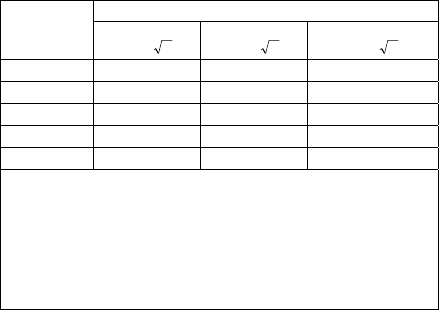
xii
●Recommended Separation Distances between Portable and
Mobile RF Communications Equipment and the HLX-801(G)
The HLX-801(G) is intended for use in an environment in which radiated RF
disturbances are controlled. The electromagnetic interference can be prevented by
maintaining a minimum distance between portable and mobile RF communications
equipment (transmitters) and the HLX-801(G) as recommended below, according to
the maximum output power of the communications equipment.
Rated Maximum
Output Power of
Transmitter (W)
Separation Distance according to Frequency of Transmitter (m)
150kHz to 80MHz
d = 1.2 P
80MHz to 800MHz
d = 1.2 P
800MHz to 2.5GHz
d = 2.3 P
0.01 0.12 0.12 0.23
0.1 0.38 0.38 0.73
1 1.2 1.2 2.3
10 3.8 3.8 7.3
100 12 12 23
For transmitters rated at a maximum output power not listed above, the recommended
separation distance d in meters (m) can be determined using the equation applicable to the
frequency of the transmitter, where P is the maximum output power rating of the transmitter in
watts (W) according to the transmitter manufacturer.
Note 1 : At 80MHz and 800MHz, the separation distance for the higher frequency range
applies.
Note 2 : These guidelines may not apply in all situations.
Electromagnetic propagation is affected by absorption and reflection from structures,
objects and people.
xiii
Contents
Safety Precautions .................................................................................. i
Precaution from Fukuda Denshi ....................................................... i
Graphic Symbols .............................................................................. ii
Precautions for Safe Operation of Medical Electrical Equipment .... iii
Non-Explosion Proof ....................................................................... iv
Precautions about Magnetic Resonance Imaging (MRI) ................. v
Precautions about the installation of the equipment ........................ v
Precautions about Accessories and Optional Accessories ............. v
Precautions about Output Signal .................................................... v
Precautions about Alarm ................................................................. vi
Precautions about Cleaning and Disinfection ................................. vi
Precautions about Disposing of Equipment, Accessories, or Components
................................................................................................... vi
Precautions for Safe Operation of Medical Telemetry .................... vii
Electromagnetic Compatibility ................................................................ viii
Precautions for Safe Operation under Electromagnetic Influence . viii
EMC Guidance ................................................................................ ix
1. General Description ........................................................................... 1
2. Name of Parts and Their Functions .................................................. 3
3. Preparation ......................................................................................... 5
4. Operation ............................................................................................ 6
■ Operation Procedure ................................................................. 6
■ Changing the Transmitter Channel ............................................ 6
■ Changing the Group ID .............................................................. 6
5. Troubleshooting ................................................................................. 7
6. Cleaning and Disinfection ................................................................. 9
■ Cleaning .................................................................................... 9
■ Disinfection ................................................................................ 9
7. Maintenance Check ......................................................................... 11
■ Daily Check ............................................................................. 11
■ Periodic Check ........................................................................ 11
■ Periodic Replacement ............................................................. 11
8. Accessories ...................................................................................... 13
■ Standard Accessories .............................................................. 13
9. Specification ..................................................................................... 15
■ Specification ............................................................................ 15
xiv
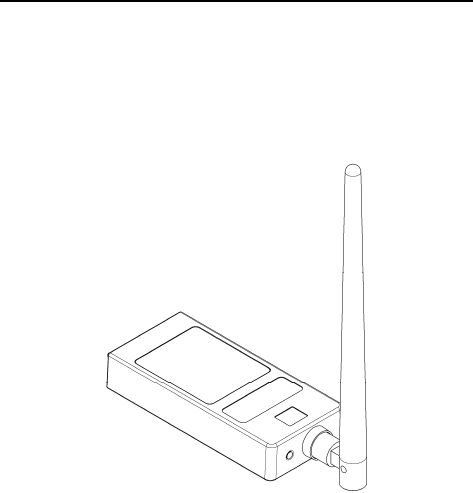
1
1. General Description
The HLX-801(G) is a transmitter module to wirelessly transmit vital signal waveforms
and numeric data which are monitored on the DS-8100 series bedside monitors. A
telemetry monitoring system is constructed in combination with a central monitor such
as DS-7700 system.
A telemetry channel can be set with an arbitrary channel on the bedside monitor.
Before using the HLX-801(G), also read the operation manuals of the patient monitor
and central monitor thoroughly.
External appearance
2
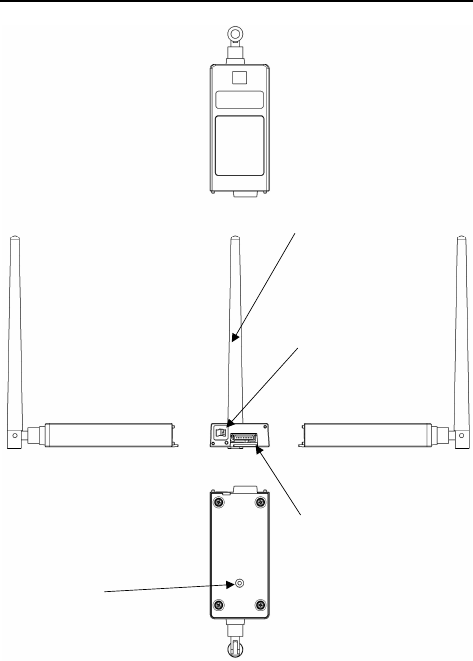
3
2. Name of Parts and Their Functions
Screw Hole
A hole to secure the mounting
bracket with a screw to a
bedside monitor externally
Connecting Plug
A connector to
communicate with the
bedside monitor
Antenna
Refer to the safety
precautions in the
preface of this
manual.
4
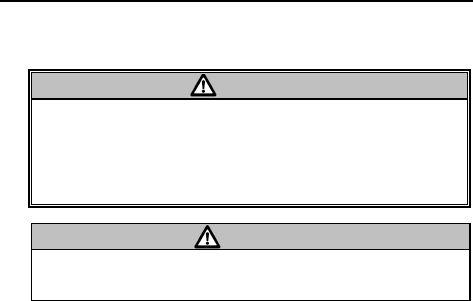
5
3. Preparation
■ Installation to the Bedside Monitor
For procedure to install to the bedside monitor, refer to the operation manuals of the
bedside monitor and optional mounting bracket.
WARNING
The HLX-801(G) is a module dedicated to the bedside monitor
manufactured by Fukuda Denshi Co., Ltd. The use of the power separated
from the commercial power guarantees the safety.
Do not connect the HLX-801(G) to a device other than the bedside monitor
manufactured by Fukuda Denshi Co., Ltd. The equipment may be damaged
or leakage current increases and the safety of the patient and operator
cannot be guaranteed.
CAUTION
When installing the HLX-801(G), verify that the power of the bedside monitor
is OFF before the procedure.
After installation, make sure it operates normally.
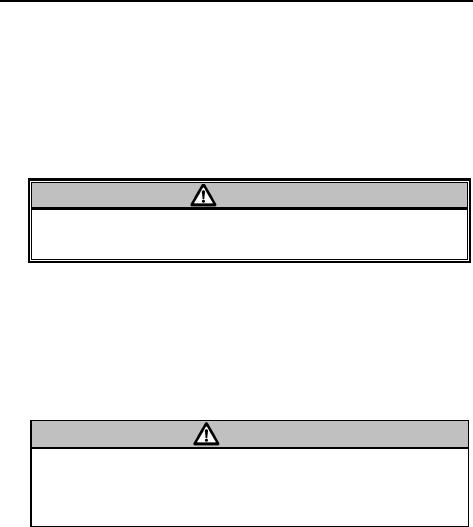
6
4. Operation
■ Operation Procedure
For operation procedure, refer to the operation manual of the bedside monitor to which
the HLX-801(G) is connected.
■ Changing the Transmitter Channel
The HLX-801(G) is a synthesizer type transmitter module which the transmitter
channel can be changed. It can be set up with an arbitrary channel among the channels
assigned by the Telemetry Laws (according to each country). For details on the setting
procedure, see the operation manual of the bedside monitor.
WARNING
Follow the instruction by the person in charge of the radio telemetry channel in
your facility when the transmitter channel is changed. Mismanagement may
result in a serious accident, such as interference and mixing up patients.
■ Changing the Group ID
The HLX-801(G) transmits its group ID to prevent interference with neighboring
hospital's transmitter. The central monitor checks whether the incoming group ID is
the same as the programmed one that the central monitor has and displays the
waveform.
The transmitter group ID can be changed if there is interference with a neighboring
hospital's transmitter. For details on the setting procedure, see the operation manual of
the bedside monitor.
CAUTION
Possible causes of interference other than radio telemetry from neighboring
hospital's transmitter are the proximity of mobile phone, amateur radio station,
radio taxi, and illegal citizens band, which may be a cause of interference. In
such a case, the situation should be carefully observed to find the cause of
interference.
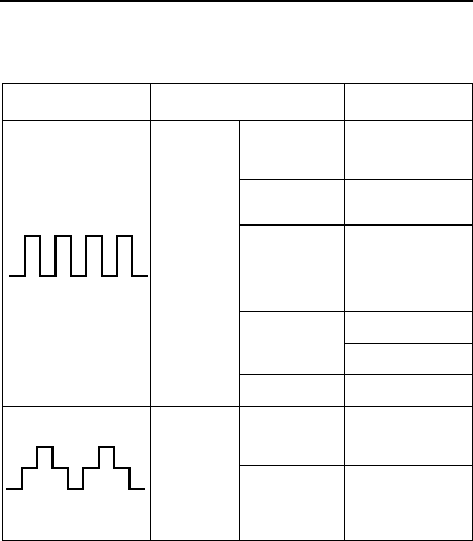
7
5. Troubleshooting
If the measurement waveform is not properly displayed on the central monitor, check
the following items.
If the phenomenon cannot be improved, contact your local Fukuda Denshi service
representative.
Pattern on the central
monitor Cause Solution
The radio
waves are not
transmitted.
The connection is
not properly set.
Check the connection
between the HLX-
801(G) and bedside
monitor.
The power of the
bedside monitor is
turned OFF.
Check if the power on
the bedside monitor is
turned ON.
The channel
numbers between
the transmitter and
the receiving
monitor are not the
same.
Make sure that the
channel number of the
bedside monitor and
central monitor is the
same.
Poor transmission
Check the antenna of
the HLX-801(G).
Check the antenna of
the central monitor.
Transmitter
malfunction
Contact Fukuda Denshi
representative.
Noise is
interfering.
The channel
number
arrangement is not
appropriate.
Follow the instruction of
the telemetry manager
and set the appropriate
channel.
The group ID is
not corresponded
with the central
monitor.
Follow the instruction of
the telemetry manager
and set the correct group
ID.
8

9
6. Cleaning and Disinfection
Clean and disinfect the HLX-801(G) as shown below.
CAUTION
Do not sterilize the HLX-801(G) in any manners since it is not ready for
sterilization.
■ Cleaning
Clean the HLX-801(G) using squeezed gauze or an absorbent cotton cloth dampened
with alcohol or a neutral detergent.
CAUTION
Clean the equipment frequently so stains can be removed easily.
To prevent injury, it is recommended to wear gloves when cleaning the
equipment.
Do not allow liquids or cleaning solution to enter the equipment or connectors.
The HLX-801(G) cannot be sterilized.
Do not use organic solvents, thinner, toluene and benzene to avoid damaging
the resin case.
Do not polish the housing with abrasive or chemical cleaner.
Use only neutral detergent to clean the housing. Do not use chemical cloth,
scrub brush, abrasive, polishing powder, hot water, volatile solvent and
chemicals (cleanser, thinner, toluene, benzine, benzol, and synthetic
detergent for house and furniture), or sharp-edged tools. The surface resin
coating may be damaged, resulting in discoloration, scratches, and other
problems.
■ Disinfection
If there is a fear of contagion, wipe using gauze or absorbent cotton soaked in
antiseptic soap or alcohol and wrung.
CAUTION
Do not immerse the connector parts of the HLX-801(G) in any chemical
solution. Contact failure may occur.
When performing simultaneous disinfection inside the ward or room using
chemical sprays, make sure that the chemicals do not enter the equipment or
come into contact with the connectors.
10
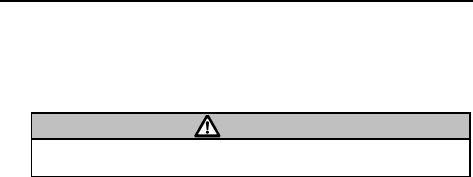
11
7. Maintenance Check
Periodic check must be performed. When reusing the HLX-801(G) which was left
unused for a while, always check that the unit operates properly and safely before use.
In this section, the maintenance check items that must be performed for the HLX-
801(G) are explained. To ensure safety, reliability, and high performance, a “Daily
Check” and “Periodic Check” must be performed. Be aware that Fukuda Denshi is not
liable for any accidents arising from the lack of maintenance check.
CAUTION
Do not open the housing.
Avoid alcohol or other liquids from getting into the equipment.
■ Daily Check
Perform the daily check according to the “Daily Check List”.
■ Periodic Check
Periodic inspection of medical electronic equipment is mandatory to prevent failures
and accidents and to ensure safety and reliability.
Periodic check may be performed by the medical institution or a third party by
concluding a “Maintenance Contract”.
For more details, contact your local Fukuda Denshi service representative.
■ Periodic Replacement
No periodic replacement parts.

12
Daily Check List
No.
Checked Date Checked by Location
Model Type: HLX-801(G) Serial No. Date of Purchase
Item Check Details Criteria Judgement
External
Appearance
Visually inspect for damage,
cracks, breaks, and chips of
the exterior, peeling label, and
loose screws.
No remarkable
abnormalities
should be found.
OK/NG
Transmitting
Function
Connect to the bedside
monitor, operate under normal
operating conditions, and
check the communication
function and operation on the
central monitor.
The waveform and
numerical value
should be properly
received.
OK/NG
Telemetry
Channel
Check if the transmitter
channel and group IDs are as
specified by the telemetry
channel administrator.
It should conform
to the telemetry
channel checklist.
OK/NG
Periodic Check Check the date of the previous
periodic check.
Should be within
1 year. OK/NG
Comment
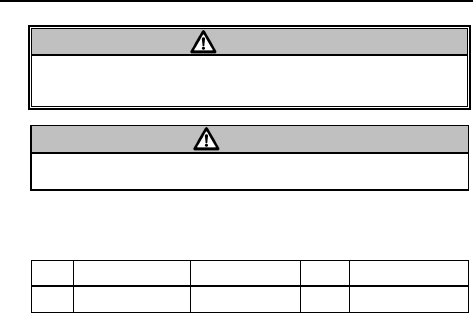
13
8. Accessories
WARNING
Use only the accessories specified by Fukuda Denshi for the HLX-801(G).
Otherwise, the HLX-801(G) cannot deliver its maximum performance and may
be damaged, resulting in a safety hazard.
CAUTION
For quality improvement, specifications are subject to change without prior
notice.
■ Standard Accessories
No. Item Model Type Q’ty Note
(1) Operation Manual 1 This manual
14

15
9. Specification
■ Specification
CAUTION
For quality improvement, specifications are subject to change without prior
notice.
Standard Specification
Size: 41(W) × 93(D) × 16(H) mm
(excluding the antenna, protrusion, and option unit)
Weight: Approx. 70g
Communication method
Modulation method: F1D
Frequency: 1395MHz to 1400MHz, 1427MHz to 1432MHz
Transmitter Chnnel One from the following channels.
9501 to 9539, 9600 to 9639, 9700 to 9739
9800 to 9839, 9900 to 9938
2701 to 2739, 2800 to 2839, 2900 to 2918
2921 to 2939, 3000 to 3039, 3100 to 3118
Oscillation method: PLL Synthesizer method by crystal control
Channel spacing: 25.0kHz
Occupied frequency
bandwidth:
Within 16.0kHz
Frequency deviation: Within ±2.5ppm
Adjacent channel power
ratio:
-42dBc or below
Effective radiated power: Within 5mW ±2dB
Transmission antenna: 1/2 wavelength Sleeve antenna
Gain 2.14dBi or below
16
Safety
General
Standard:
IEC 60601-1: 1988 + Am1: 1991 + Am2: 1995
Medical Electrical Equipment - Part 1: General Requirements for
Safety
EMC Standard: IEC 60601-1-2: 2007
(Medical electrical equipment - Part 1-2: General requirements for
basic safety and essential performance - Collateral standard:
Electromagnetic compatibility - Requirements and tests)
Operating Environment
Temperature: 10°C to 40°C
Humidity: 30% to 85%RH (non-condensing)
Atmospheric Pressure: 70kPa to 106kPa
Transport and Storage Environment
Temperature: -10°C to 60°C
Humidity: 10% to 95% (non-condensing)
Atmospheric Pressure: 70kPa to 106kPa

